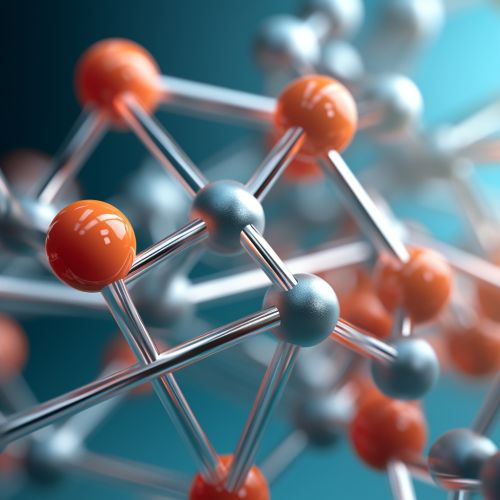Nucleotide
Introduction
A nucleotide is a fundamental unit of genetic information, composed of a nitrogenous base, a five-carbon sugar (either ribose or deoxyribose), and at least one phosphate group. These components are chemically bonded together to form a single structure that plays a crucial role in various biological processes, including DNA replication, RNA transcription, and protein synthesis.


Structure of Nucleotides
Nucleotides are composed of three primary parts: a nitrogenous base, a five-carbon sugar, and one or more phosphate groups.
Nitrogenous Base
The nitrogenous base is a ring-shaped molecule made up of carbon and nitrogen atoms. There are five types of nitrogenous bases found in nucleotides: adenine (A), guanine (G), cytosine (C), thymine (T), and uracil (U). Adenine and guanine are classified as purines, while cytosine, thymine, and uracil are pyrimidines.
Five-Carbon Sugar
The five-carbon sugar in a nucleotide can be either ribose or deoxyribose. Ribose is found in Ribonucleic Acid (RNA), while deoxyribose is found in Deoxyribonucleic Acid (DNA). The difference between these two sugars lies in the presence of a hydroxyl group (OH) in ribose and a hydrogen atom (H) in deoxyribose at the 2' carbon atom of the sugar ring.
Phosphate Group
The phosphate group in a nucleotide is attached to the 5' carbon of the sugar molecule. This phosphate group is essential for the formation of the phosphodiester bonds that link the nucleotides together to form the backbone of the DNA and RNA strands.
Role in Genetic Information Storage
Nucleotides play a crucial role in the storage of genetic information. In DNA, the sequence of nucleotides forms the genetic code that determines the characteristics of an organism. Each set of three nucleotides, known as a codon, corresponds to a specific amino acid or a stop signal in the protein synthesis process.
Role in Energy Transfer
Nucleotides also play a vital role in energy transfer within cells. The nucleotide adenosine triphosphate (ATP), which contains three phosphate groups, is the primary energy currency of the cell. When ATP is hydrolyzed to adenosine diphosphate (ADP), energy is released, which can be used to drive various cellular processes.
Role in Cellular Signaling
Nucleotides are also involved in cellular signaling. Cyclic adenosine monophosphate (cAMP) and cyclic guanosine monophosphate (cGMP) are nucleotides that act as second messengers in many cellular processes, including hormone signaling and regulation of cell growth.
Nucleotide Synthesis
Nucleotides can be synthesized in the body through two primary pathways: the de novo pathway and the salvage pathway. The de novo pathway synthesizes nucleotides from simple precursors, while the salvage pathway recycles free bases and nucleosides that are produced during the degradation of RNA and DNA.
Nucleotide Disorders
Abnormalities in nucleotide metabolism can lead to various disorders. For example, Lesch-Nyhan syndrome is caused by a deficiency in the enzyme hypoxanthine-guanine phosphoribosyltransferase, which is involved in the salvage pathway of purine nucleotide synthesis. Gout, a form of arthritis, can also result from an overproduction or under-excretion of uric acid, a byproduct of purine metabolism.
